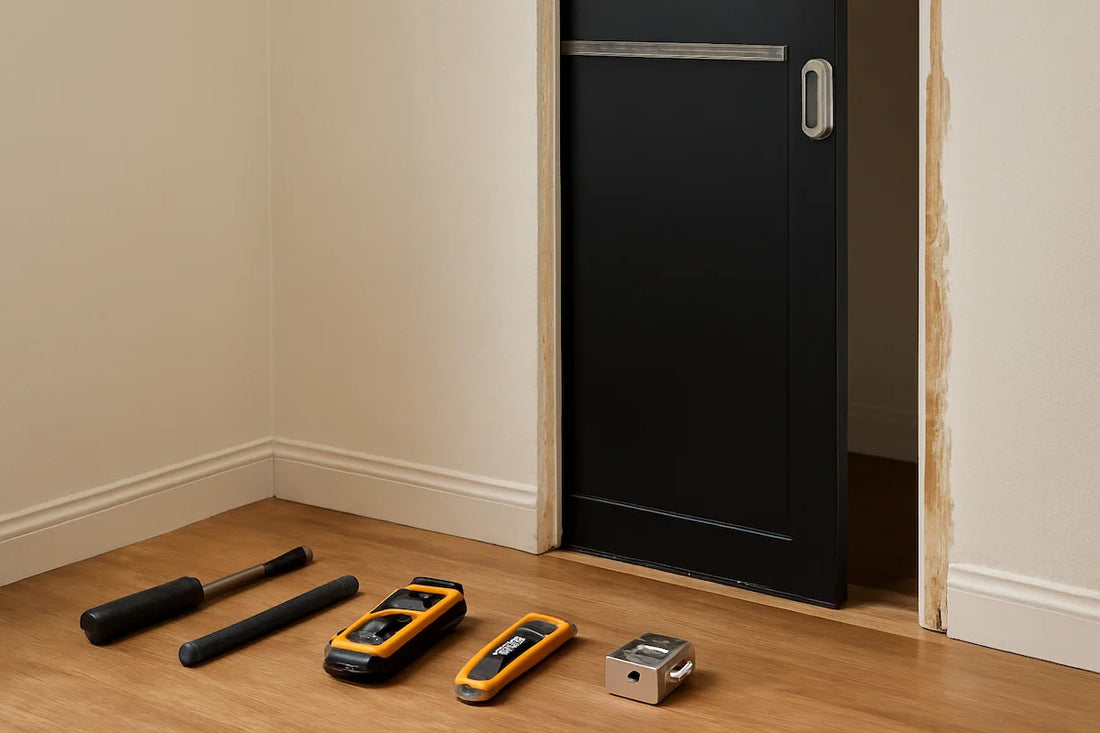How to Replace a Pocket Door: A Step-by-Step Guide for Homeowners

Pocket doors are a stylish and space-saving solution, often found in bathrooms, closets, and other tight areas where traditional swing doors can be cumbersome. However, over time, pocket doors may become damaged, misaligned, or simply outdated. If your pocket door is sticking, wobbling, or won’t close properly, it might be time for a replacement.
Replacing a pocket door is a bit more involved than changing a standard door, since the track and frame are hidden within the wall. But with the right tools and some DIY patience, you can get the job done without tearing down your entire wall.
Here’s a step-by-step guide on how to replace a pocket door.
What You’ll Need:
- New pocket door (same size as the old one)
- Screwdriver or drill
- Pry bar
- Utility knife
- Stud finder
- Tape measure
- Level
- Pocket door hardware kit (if needed)
- Replacement rollers or track (if damaged)
- Wood shims (optional)
- Joint compound and drywall repair tools (if patching is needed)
Step 1: Remove the Old Door
Start by removing the door from the existing pocket frame.
- Slide the door halfway out of the pocket wall.
- Look at the top edge of the door — there should be hanger brackets attached to rollers on a track.
- Use a screwdriver to loosen or unclip the hangers. Some systems have a spring-loaded clip you can lift off; others require unscrewing.
- Carefully lift the door off the track and remove it.
Step 2: Assess the Track and Frame
Before installing the new door, inspect the track, rollers, and frame:
- Is the track bent, worn, or noisy?
- Do the rollers glide smoothly?
- Are there any signs of moisture damage or frame warping?
If the frame and track are still in good shape, you may not need to replace them. However, if you notice any issues, it’s a good idea to replace the hardware now while the door is removed.
Step 3: Remove Trim (If Necessary)
In some cases, you may need to remove trim or casing around the door opening to access the track or frame:
- Use a utility knife to score the paint along the trim edges.
- Gently pry off the casing with a pry bar.
- Set it aside carefully if you plan to reuse it.
If you're installing a larger door or need full access to the wall cavity, you might also need to remove a small section of drywall — but for standard replacements, this step is often avoidable.
Step 4: Replace or Adjust Hardware (Optional)
If the track or rollers need replacement:
- Unscrew the old track from the pocket frame.
- Install a new pocket door track, ensuring it is level.
- Attach new hangers or rollers to the top of the new door.
- Follow the manufacturer’s instructions for aligning the hangers with the track.
Tip: Use a level to ensure the track is perfectly straight — a misaligned track can cause the door to stick or drift open.
Step 5: Install the New Pocket Door
With the track ready and hangers attached:
- Tilt the new door into position and lift it into the track.
- Connect the hangers to the rollers.
- Slide the door back and forth to test for smooth operation.
- Adjust the height or alignment if the door is not flush or drags.
Most hangers allow for minor vertical adjustments with a screw or turn knob.
Step 6: Reattach Trim and Hardware
Once the door is sliding smoothly:
- Reinstall any trim or casing you removed.
- Reattach or install new door pulls — remember that pocket doors require recessed handles to fit into the wall cavity.
- Add any door guides or floor brackets at the base to prevent wobbling.
Step 7: Final Touches
- If you had to cut into drywall, use joint compound to patch and sand.
- Touch up with paint or stain to match the door and surrounding wall.
- Test the latch or lock to ensure functionality.
Tips for a Smooth Replacement
- Always measure the new door carefully to match the existing opening. Standard pocket doors are 28–36 inches wide and 80 inches tall.
- Consider upgrading to soft-close pocket door hardware for smoother, quieter operation.
- If the wall is severely damaged or the frame is warped, it may be worth calling a professional or replacing the entire pocket door system.
Conclusion
Replacing a pocket door can seem daunting, but with the right approach, it’s a manageable DIY project that can restore both function and style to your space. Whether you're dealing with a damaged door or simply updating your home’s look, following these steps will ensure a clean and effective installation.



